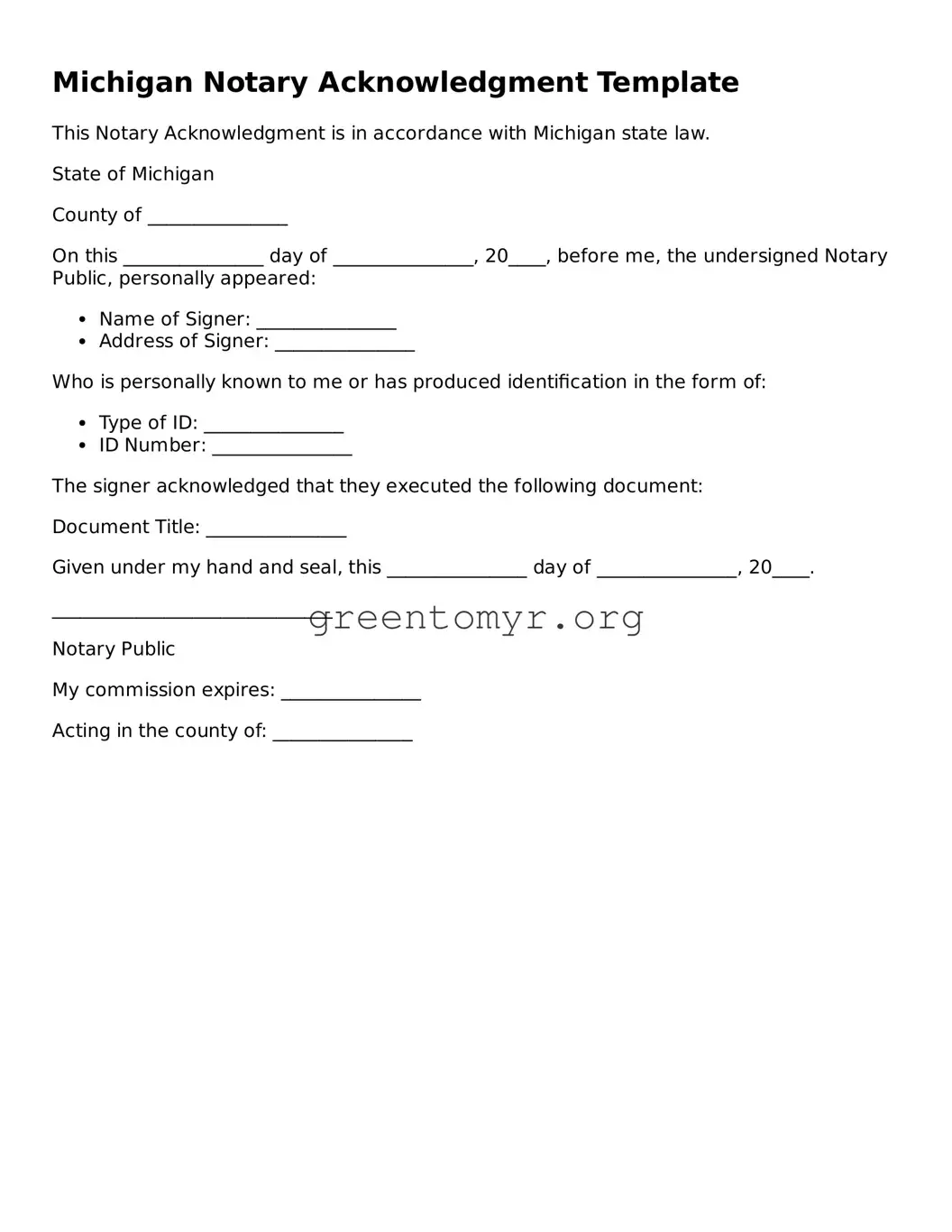Filling out the Michigan Notary Acknowledgement form may seem straightforward, but individuals often encounter pitfalls that can lead to delays or rejections. One common mistake is failing to provide accurate personal information. It is crucial for notaries to ensure that the names, addresses, and other details are correctly filled out. Even a small typographical error can cause significant issues.
Secondly, individuals sometimes overlook the requirement for the signature of the person whose document is being acknowledged. Notarization serves the purpose of verifying that the signature truly belongs to the individual in question. If this signature is missing, the form may be deemed incomplete.
Another frequent error involves the date of the acknowledgment. People may mistakenly enter the date when the document was signed rather than the date on which the notary actually performed the acknowledgment. It is essential to accurately reflect the date of notarization in order to maintain proper legal standing.
The use of incorrect notary seals can also create complications. Each notary has a specific seal that must be used according to Michigan regulations. Failing to apply the proper seal can invalidate the acknowledgment, leading to further delays.
Moreover, individuals sometimes neglect to include the official title of the notary. Notaries are required to indicate their title, and omitting it can cast doubt on the legitimacy of the notarization process.
In addition, there is a tendency to forget to fill out the venue section. This portion specifies where the acknowledgment took place. Leaving out this information can result in questions about jurisdictional authority.
Some individuals may also misinterpret the wording throughout the form, which can lead to incorrect statements being made. It is important for each person filling out the acknowledgment to clearly understand the language used to ensure that they are affirming what is true and accurate.
Additionally, problems may arise if people fail to have the acknowledgment completed in the presence of the notary. This step is critical; the notary must witness the signing to validate the acknowledgment. Without proper presence, the notarization holds no legal value.
Submitting the form without proper identification is another oversight. Notaries need to verify the identity of the signatory through a valid form of identification. Without it, the acknowledgment cannot be completed properly.
Finally, individuals sometimes forget to follow specific state guidelines for retention and submission of notarized documents. Understanding the procedures for handling these forms can save time and avoid unnecessary complications in the future.
